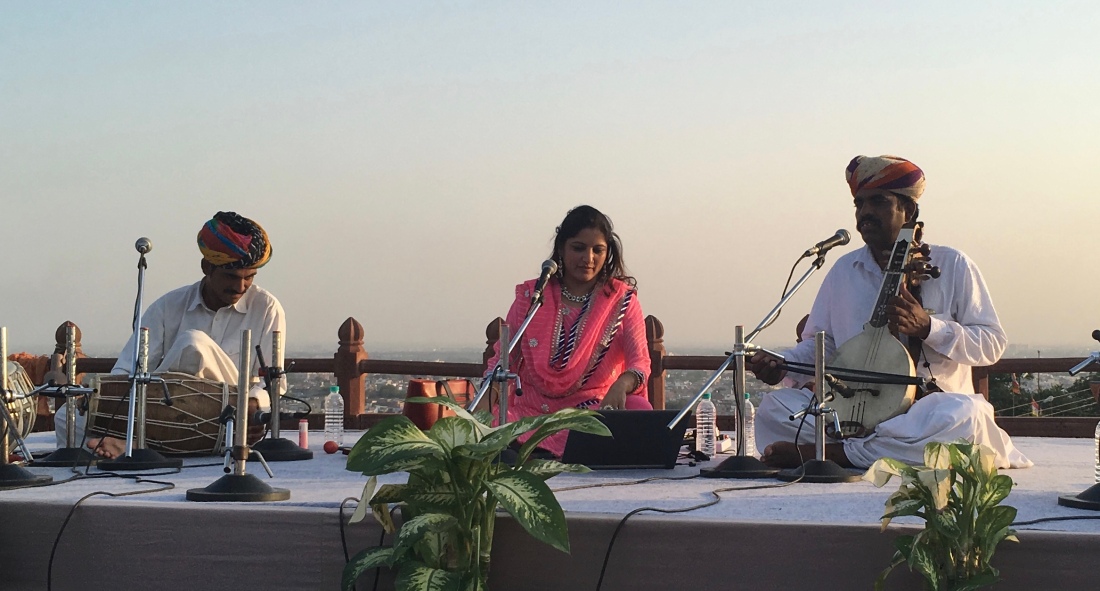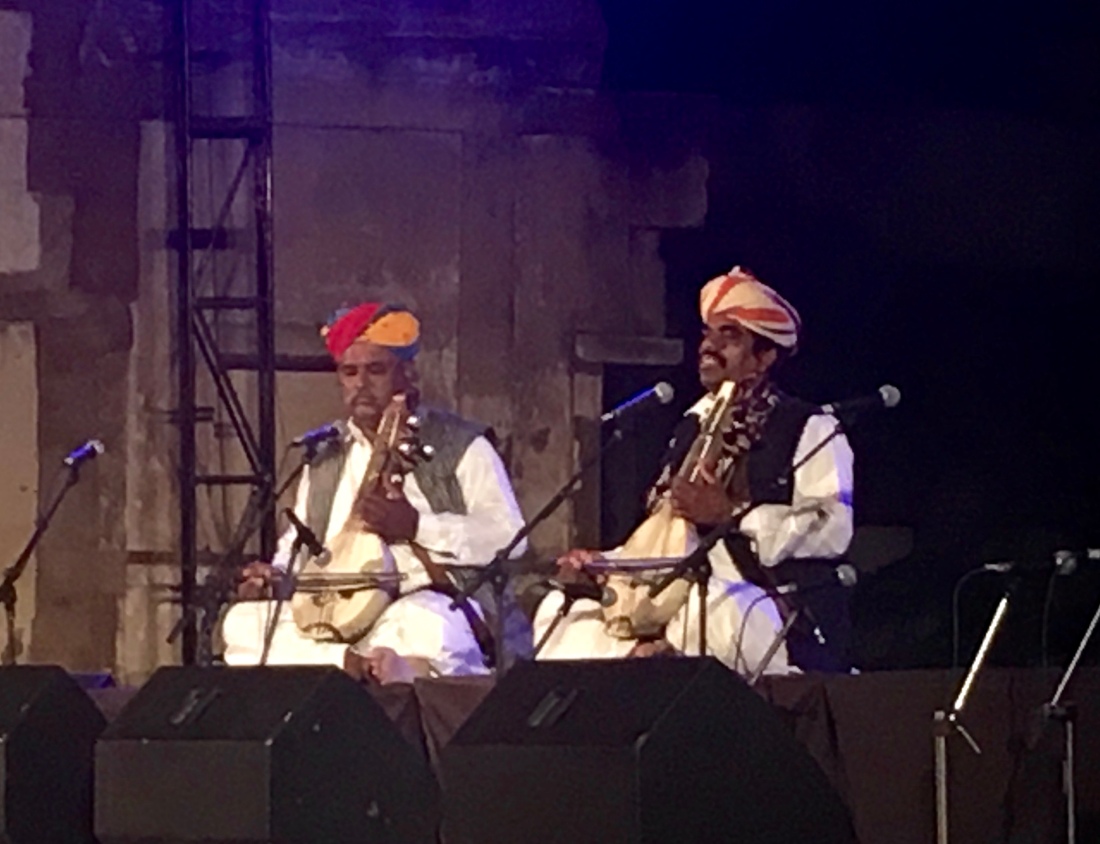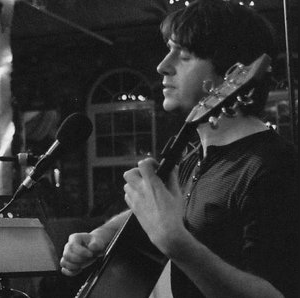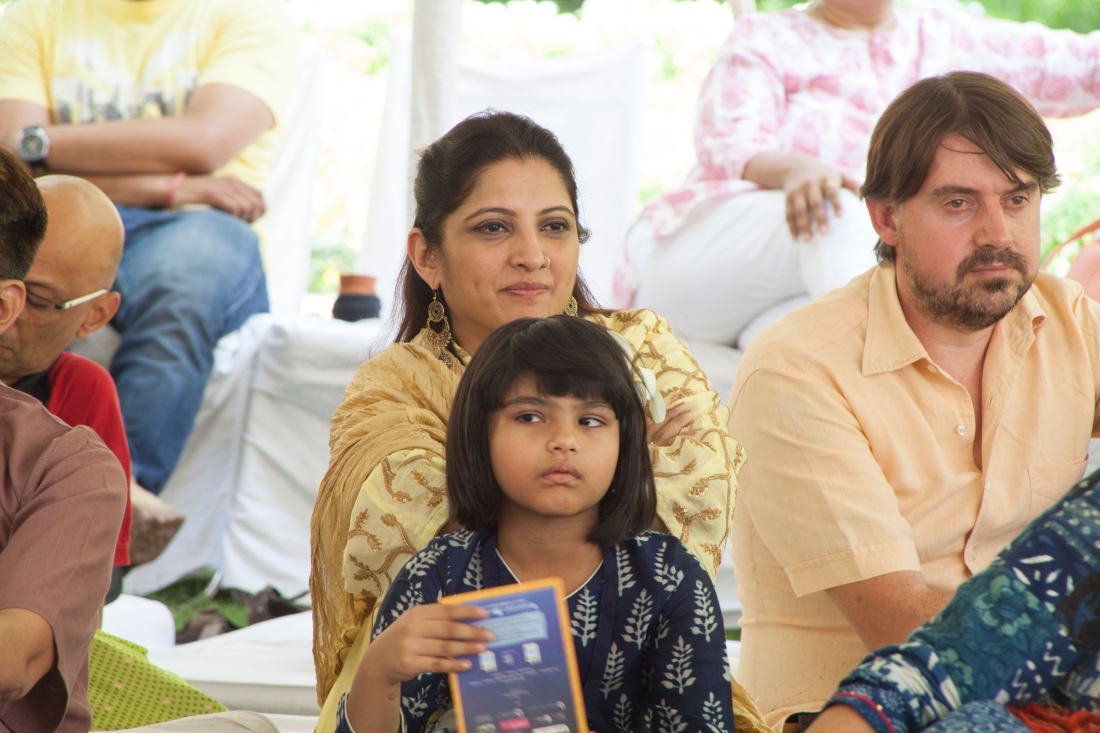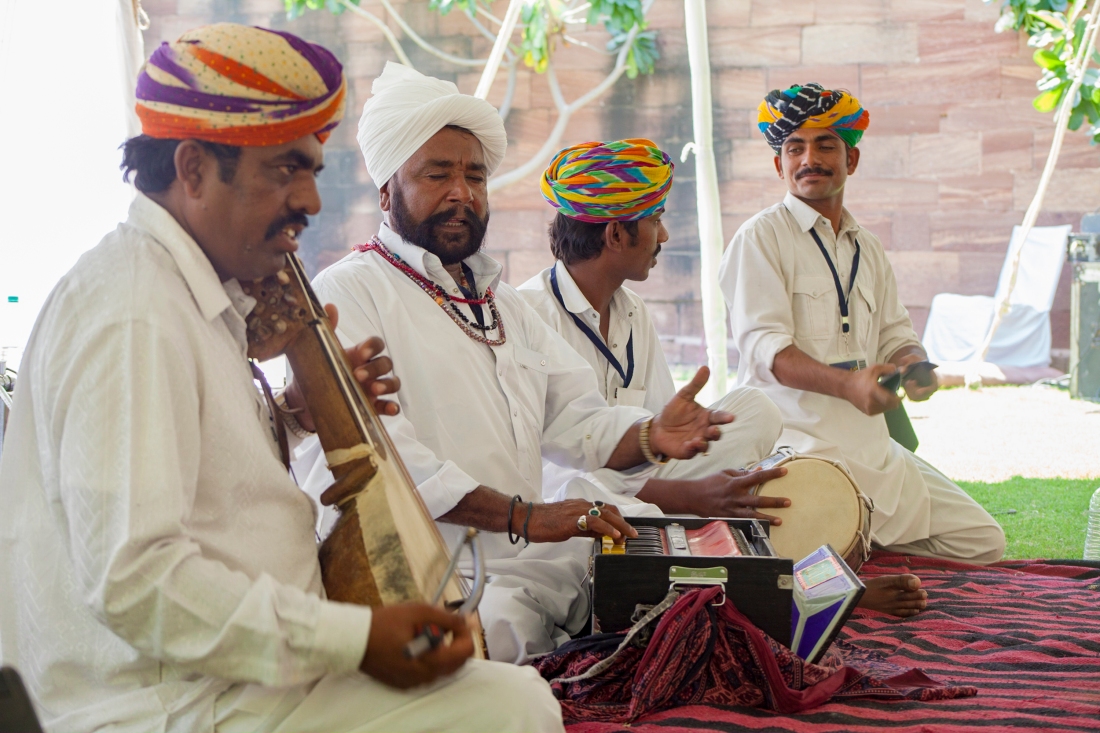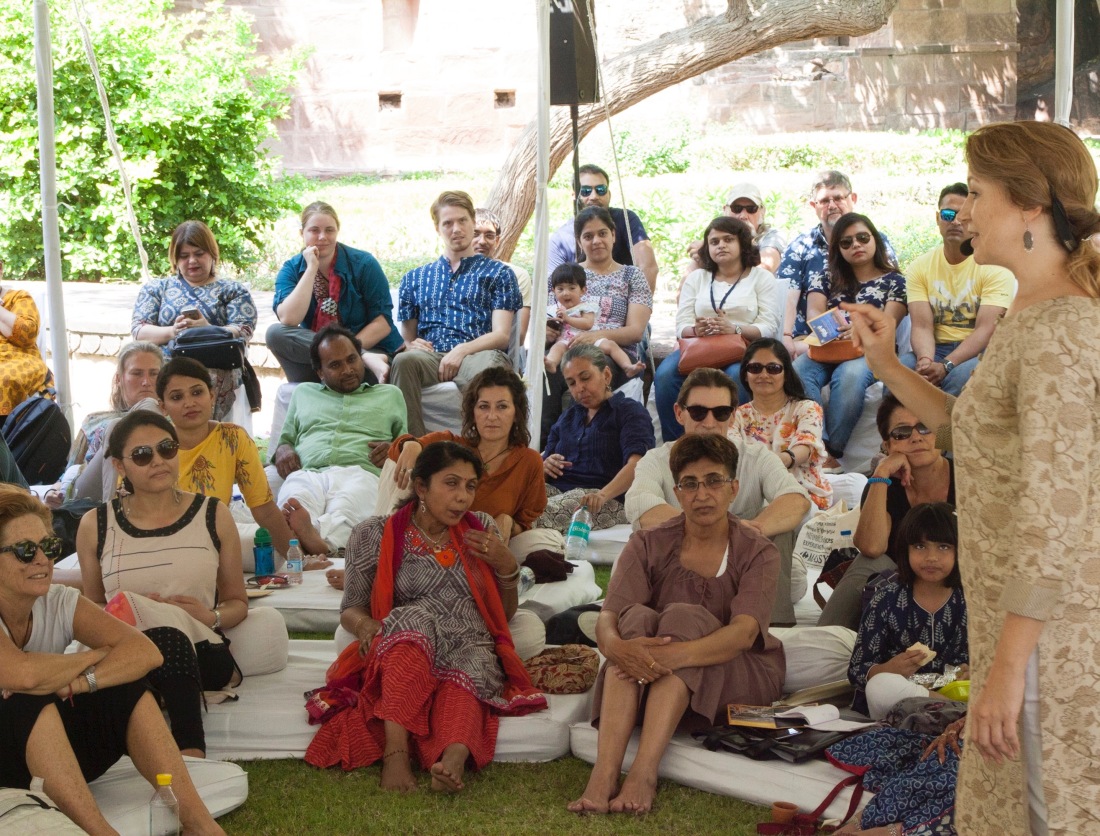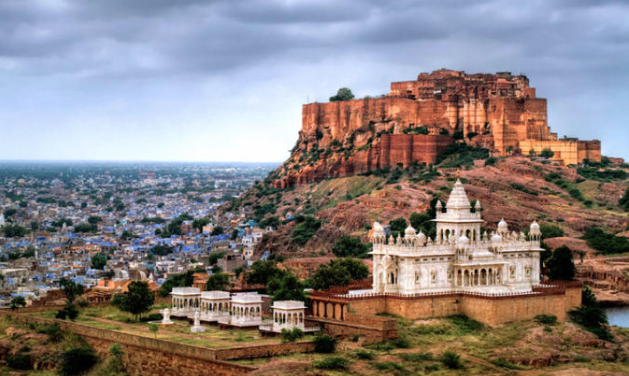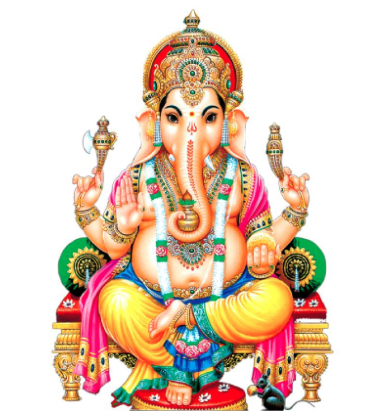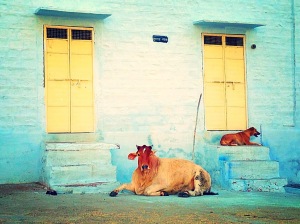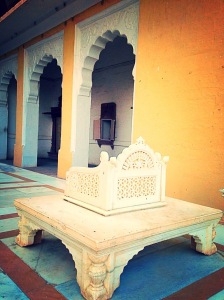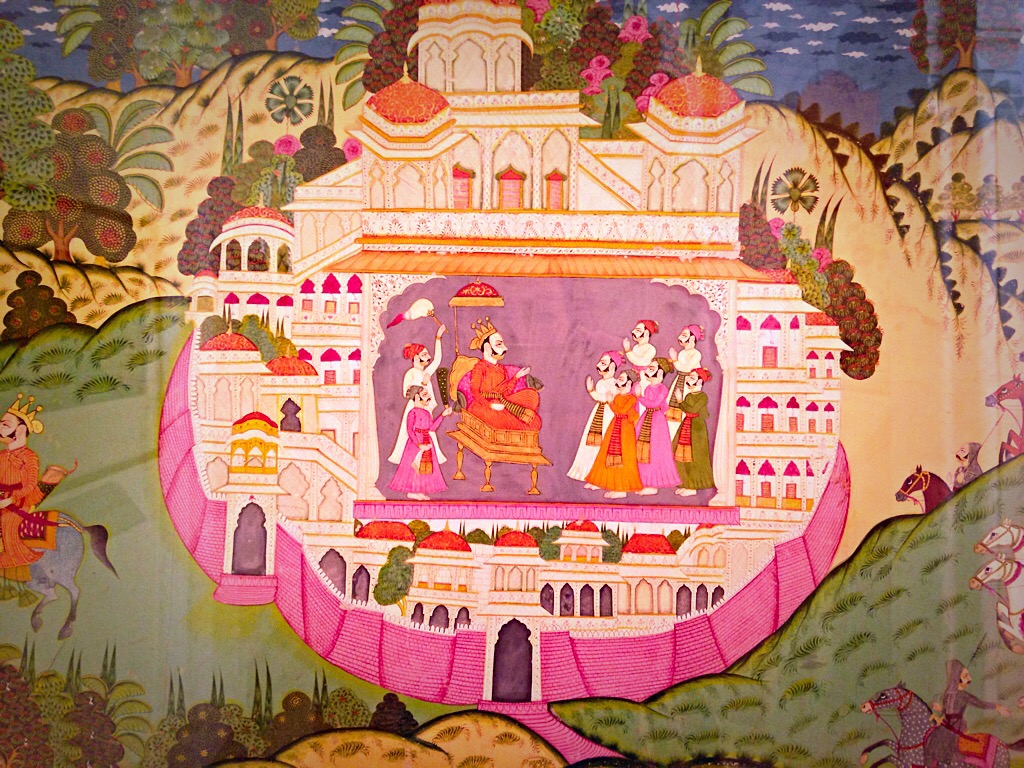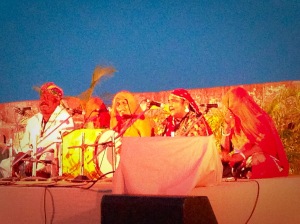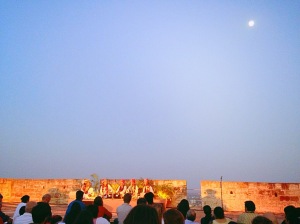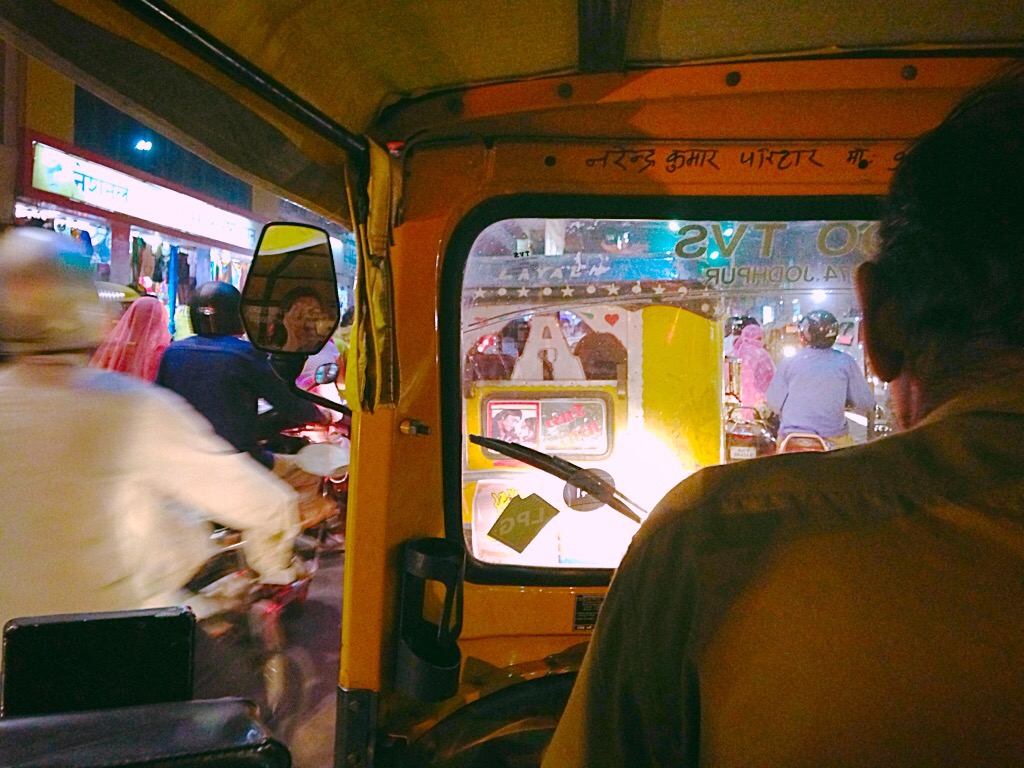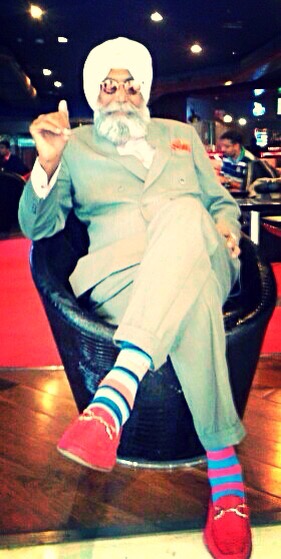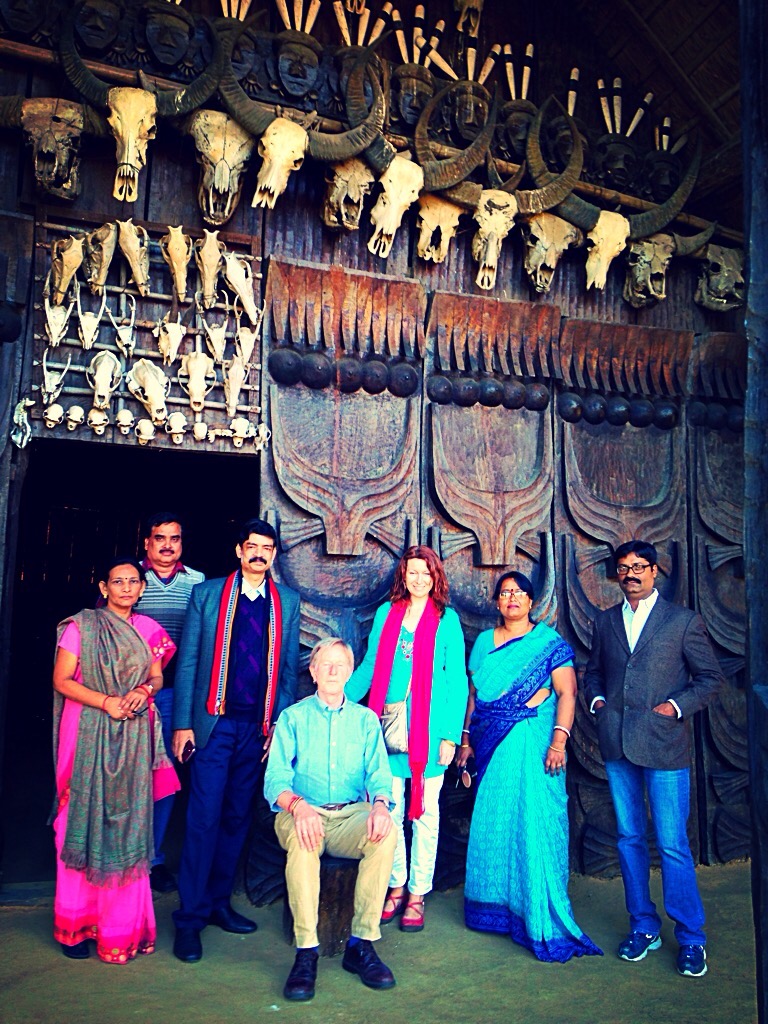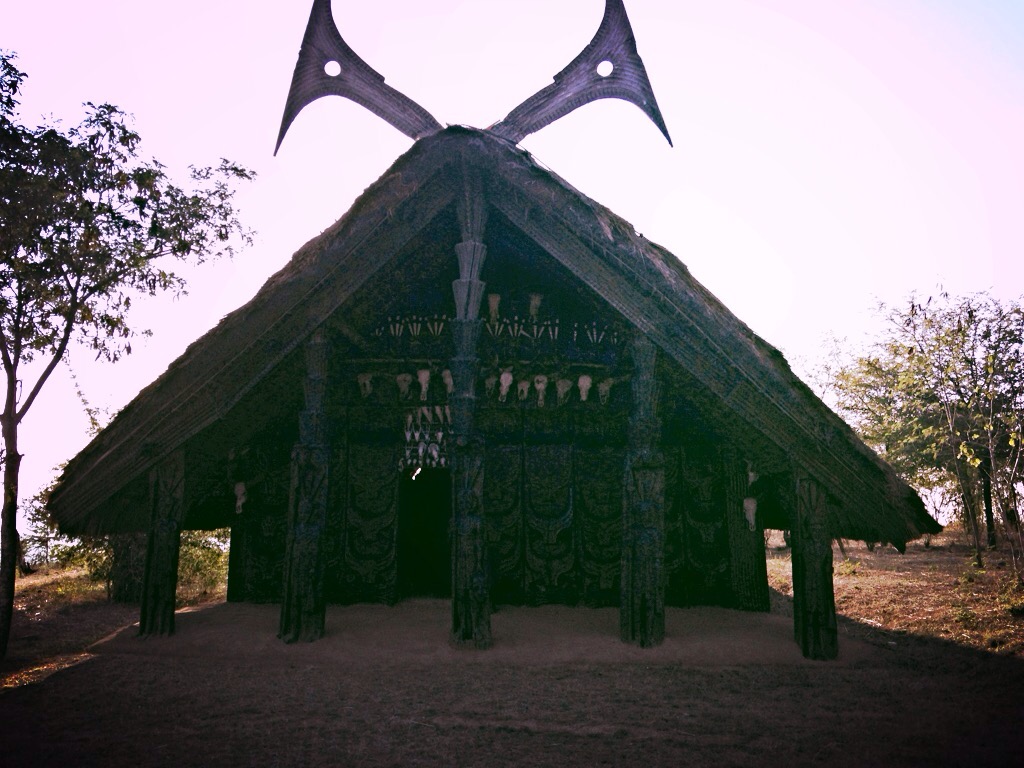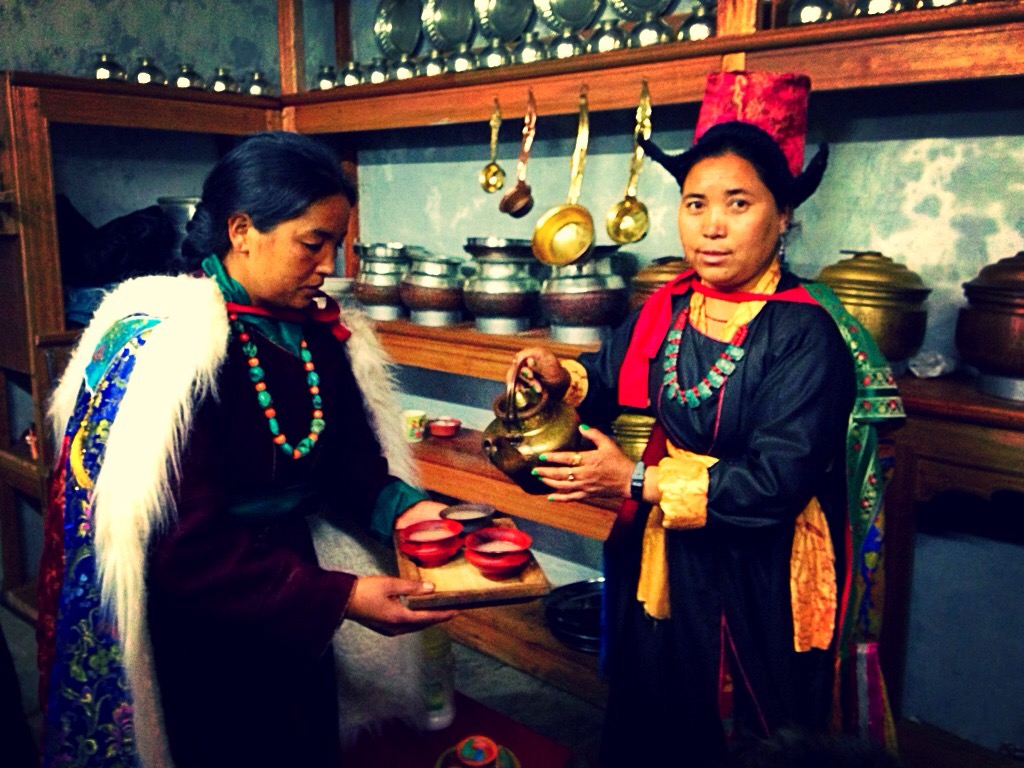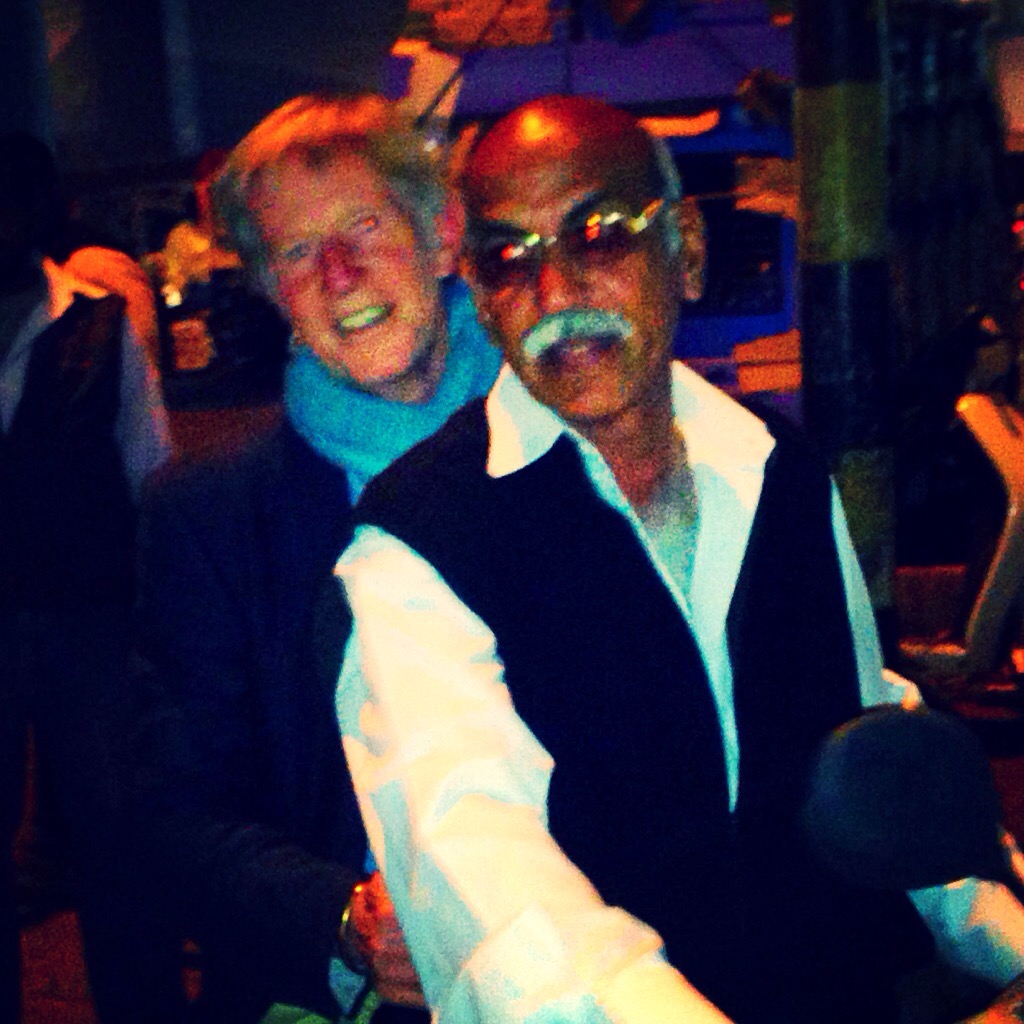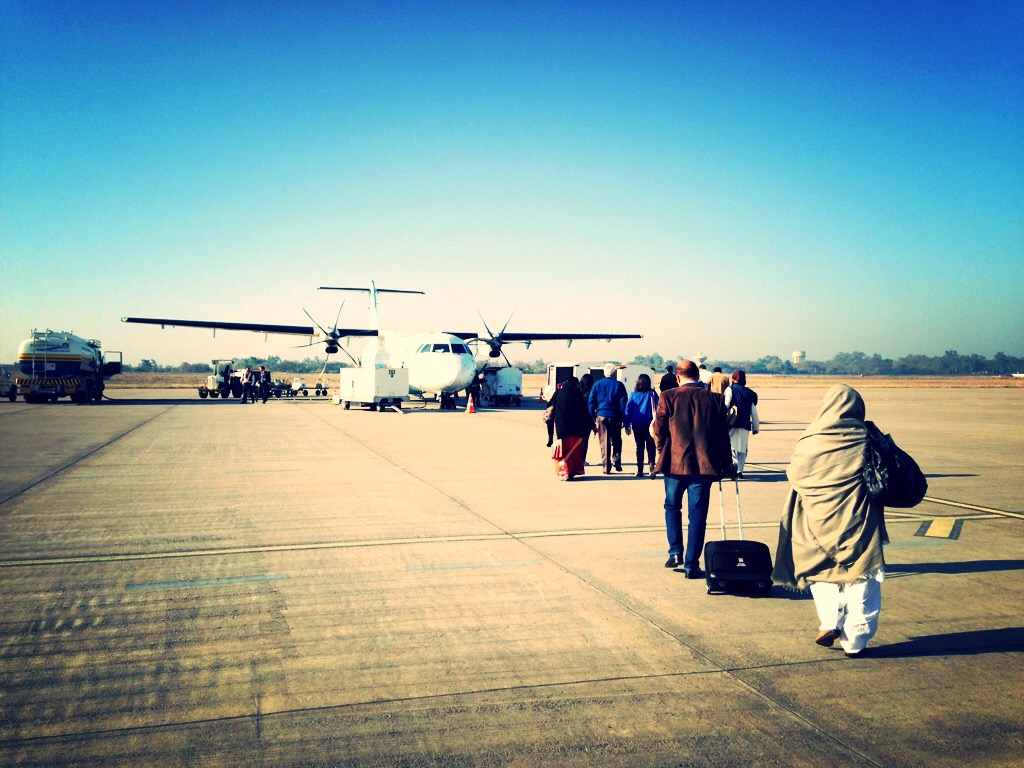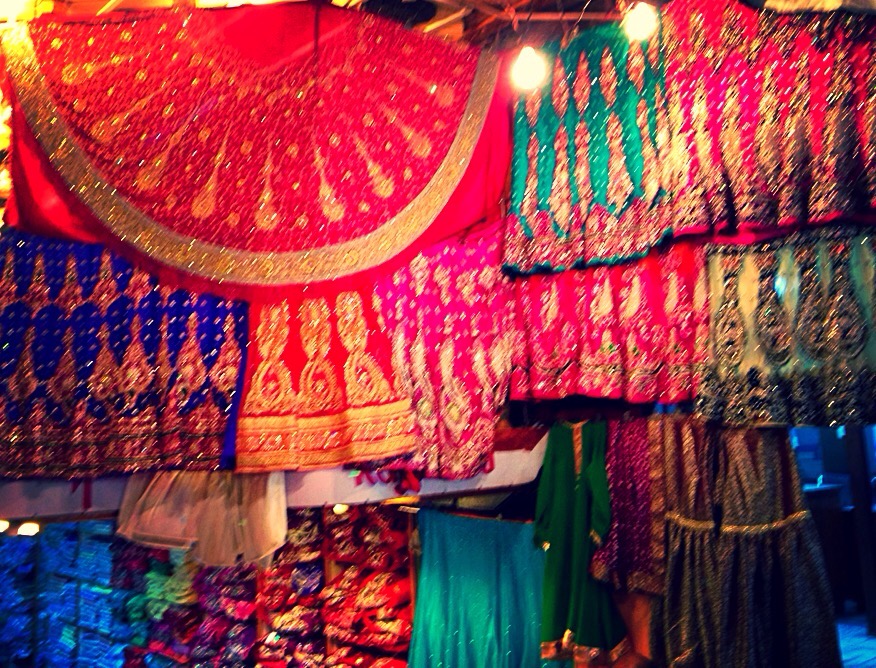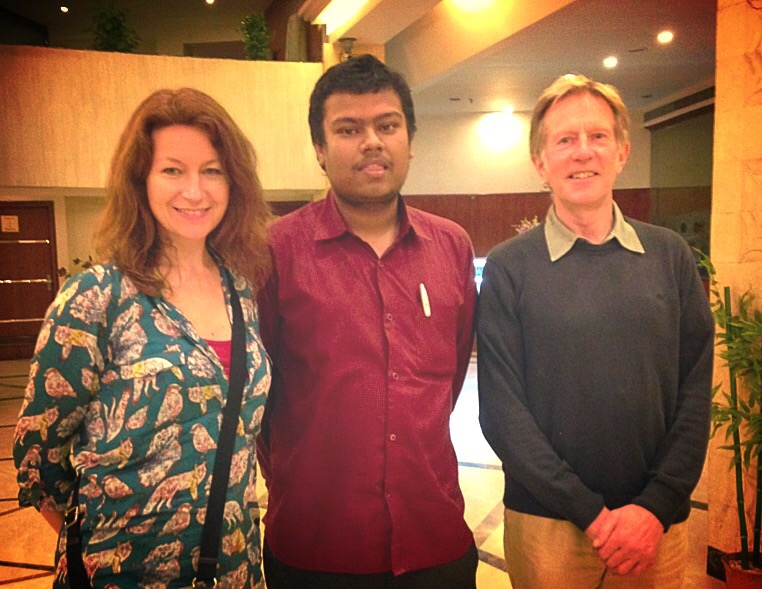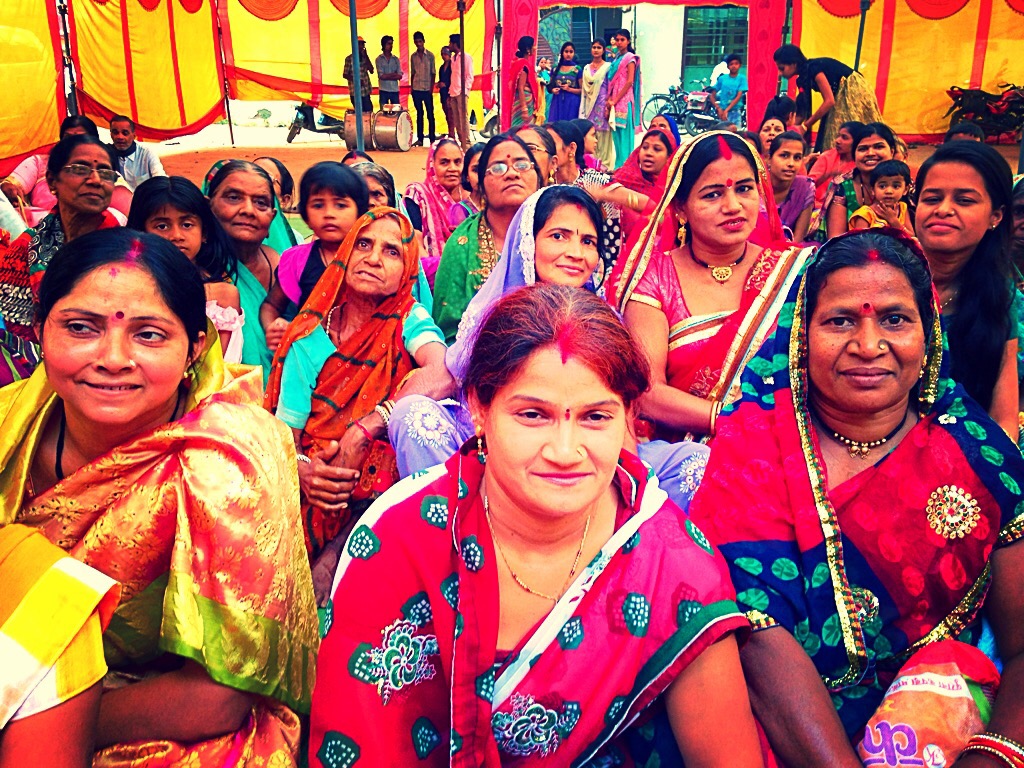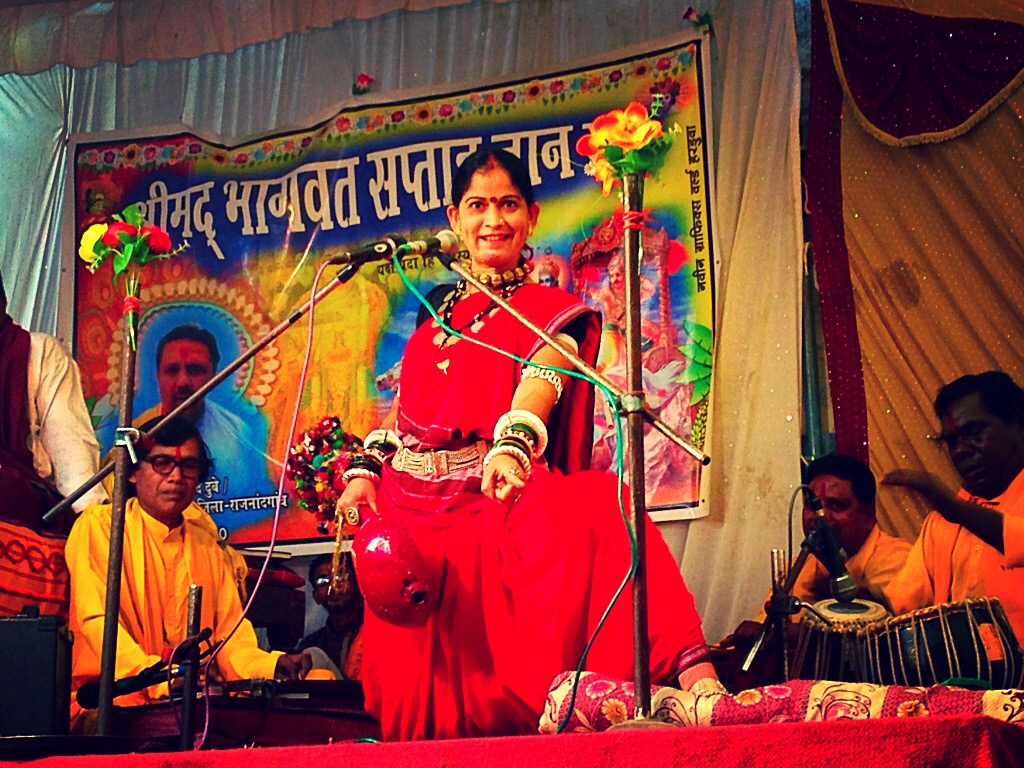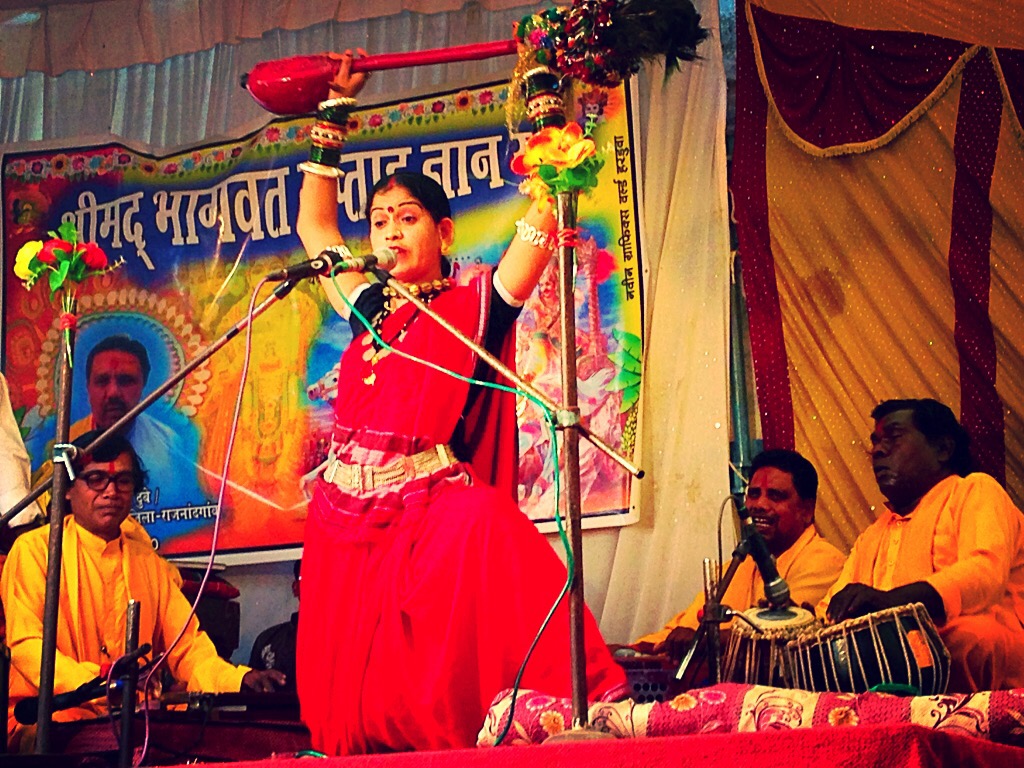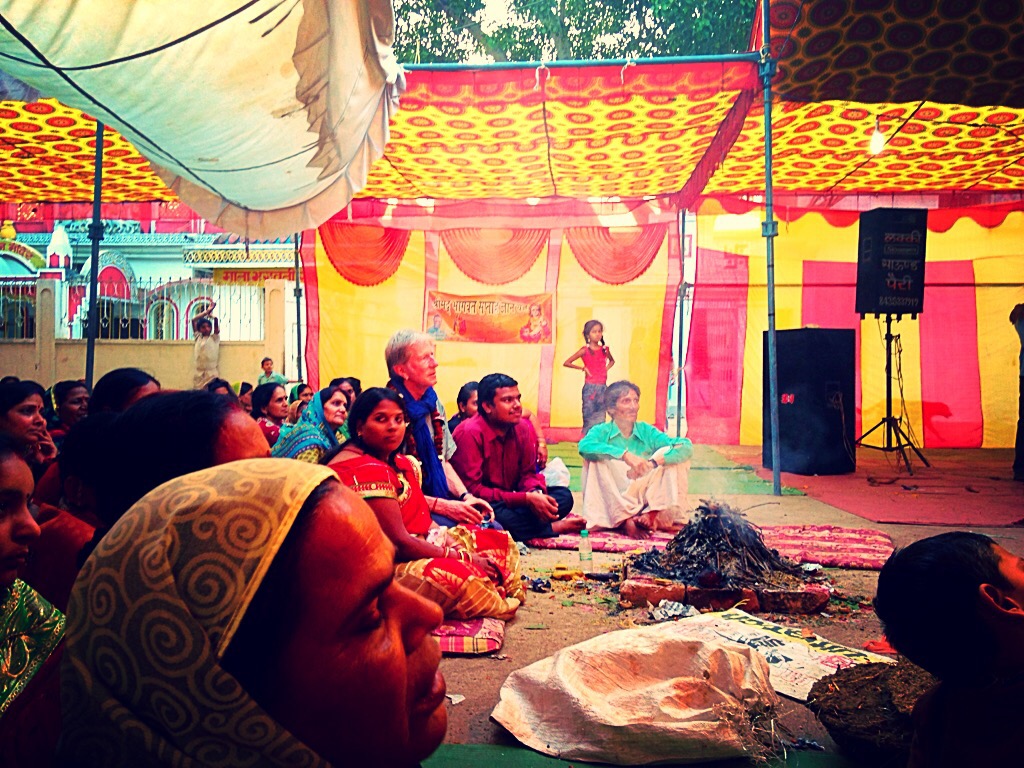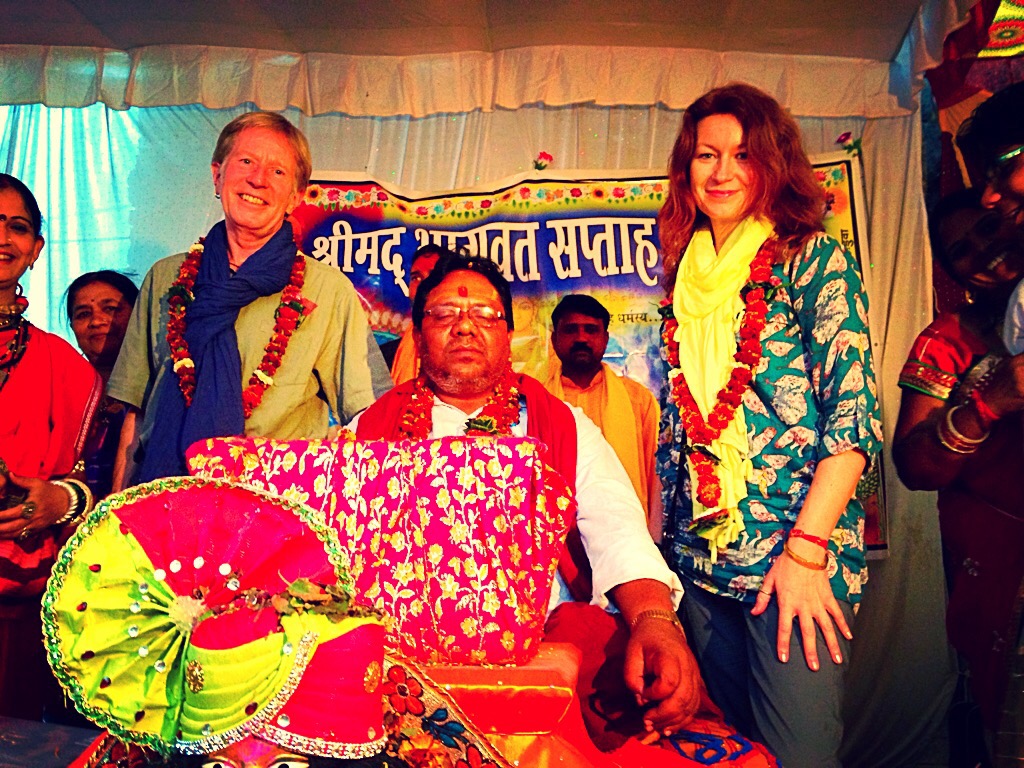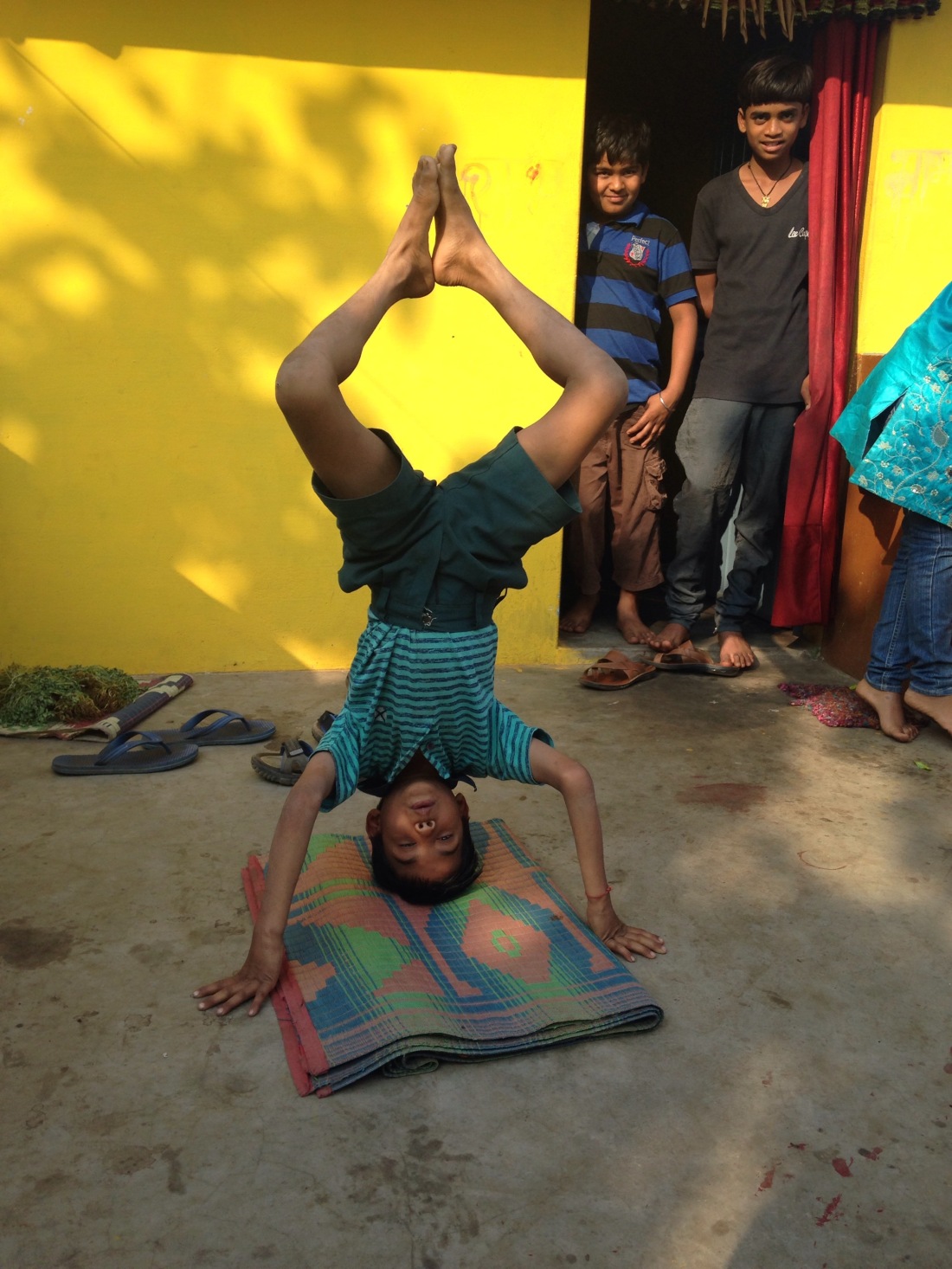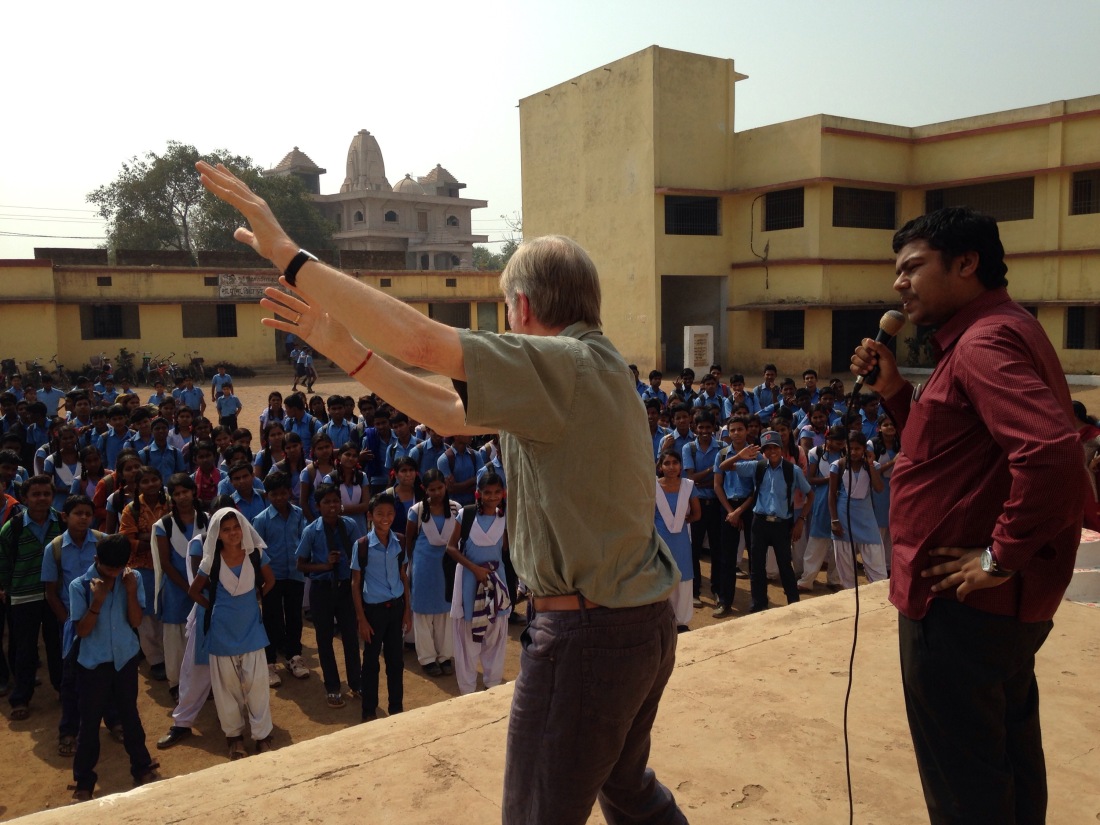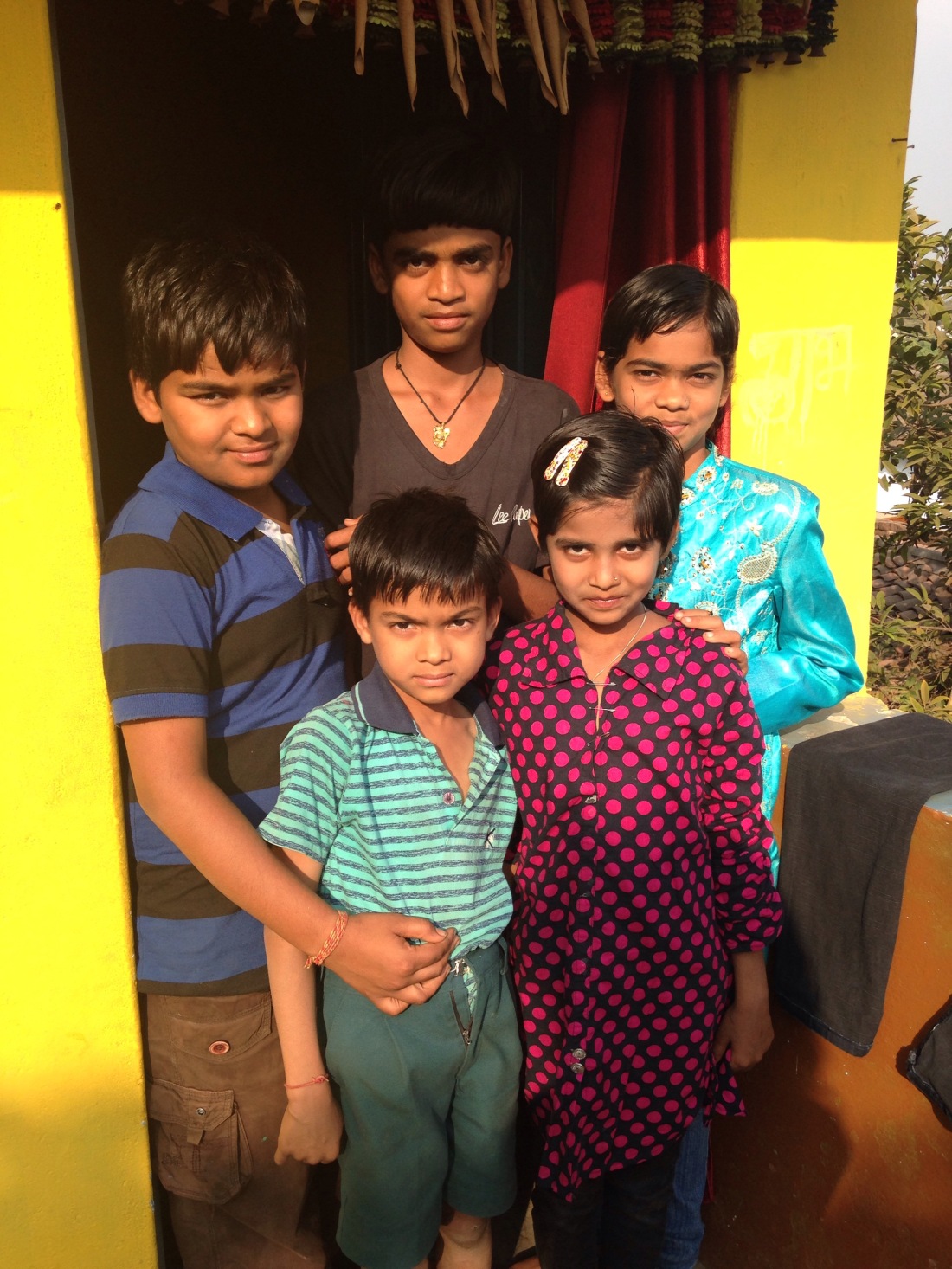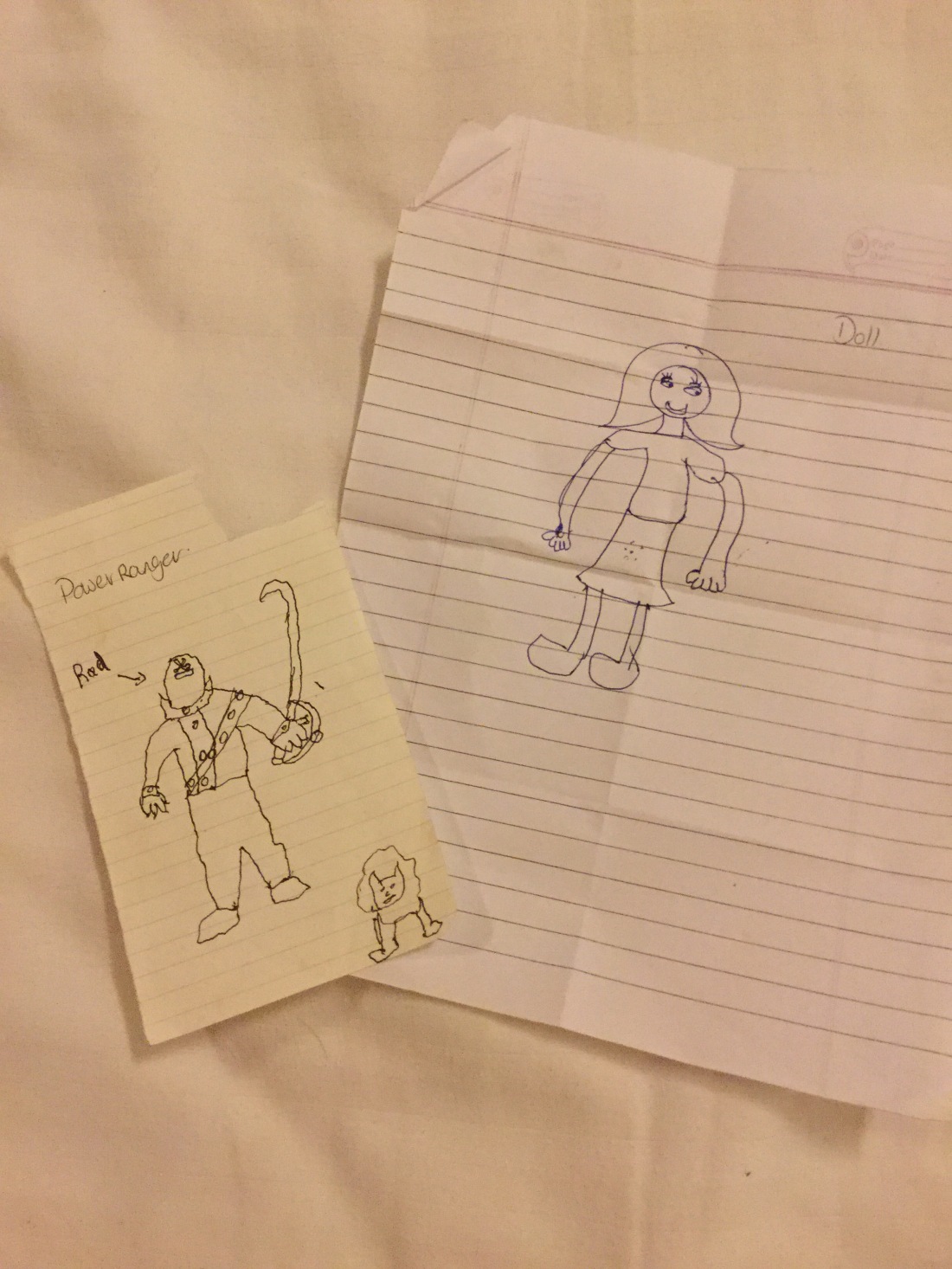We arrived in the village of Tallo ki Dhani at dusk, our car having scrambled and struggled across sandy dessert tracks for a few miles beyond the shingle road. Some of the men of the community and a posse of children gathered round our car. They smiled shyly, though I expected that curiosity would soon win out. After some introductions and sharing sweets with the children, the Shoogles were taken to the house, where musicians with whom they’d collaborated were waiting to welcome them.
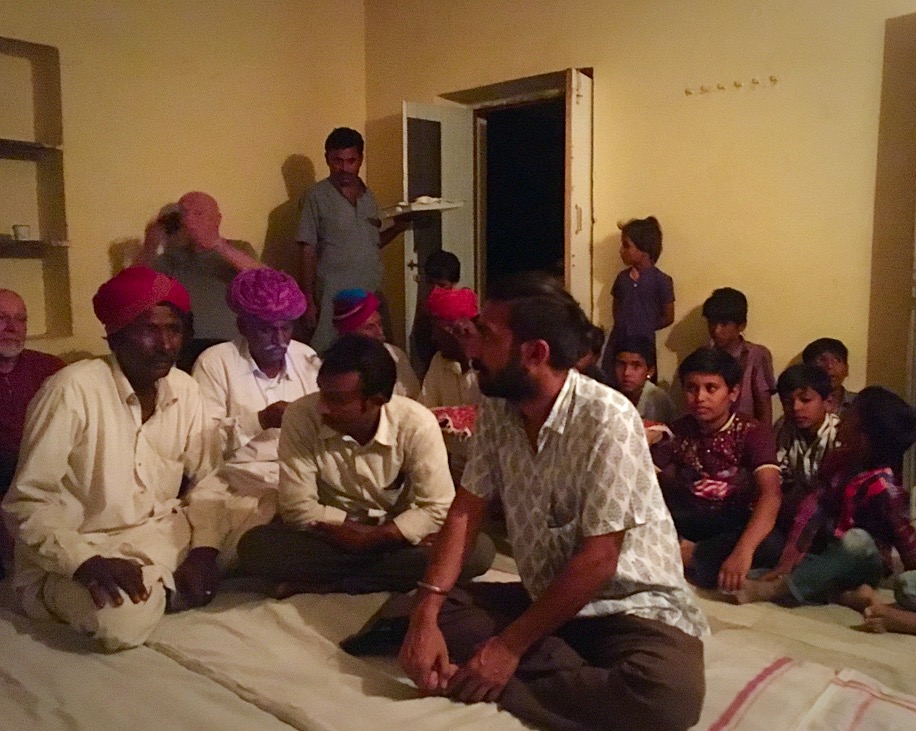
Gathering in the ‘village hall’
Gwilym, Govind, our guide and interpreter and I were ushered to what was described to me as the village hall. This squat, concrete room gradually filled with storytellers and their attendant musicians that had come from two different villages (those we had failed to visit that day due to the delay in gaining our permits), and some twelve curious boys and three young girls who stared wide eyed at Gwilym and I between fleeting glances at Bhaga Khan who was quietly tuning his tandura, a long necked fretless Indian lute, with a body made from a gourd. It is the chosen instrument of Saraswati the Hindu goddess of knowledge, music, arts, wisdom and learning worshipped throughout Nepal and India. In most images and statues she is depicted either playing the tandura or holding one.

Bhaga Khan singing a story with his tandura
Every so often, one of the men would hush fidgety children, or impatiently shoo them out of the room, but gradually, their faces would re-appear at the window and at the door and they would slink back in like young foxes, drawn to the storyteller. His head was bent to the neck of his instrument, his eyes closed, totally absorbed in the act of adjusting the tone of four metal strings, as though nothing else existed in this world but the sound and the tuning pegs. We all watched him, drawn in by his focus and the air of peace about him.
Govind filled the waiting, explaining that Bhaga Khan, had spent time living with sadhus, Hindu ascetics who had renounced worldly life. He’d learned from them many devotional and teaching stories, which he now told in addition to the traditional Manganyiar storytelling repertoire. A few minutes later as the final tuning was done, and the dholak player finished tapping the edges of his hand drum to tighten the goat-skin, the room hushed and Bhaga Khan began. Head still tilted intimately to the tandura, he strummed a drone then began to sing in a light, gentle voice, lines of an ancient song he’d learned from a sadhu called Gee Aram in Varanasi. In this form of storytelling performance, songs are used to punctuate portions of story narrative. The songs use lines of ancient and often difficult to decipher spiritual poetry, and any number of tales can be partnered with each song, they are matched only by theme or the lesson they communicate.
The story he chose to tell was of a boy child waiting impatiently in the womb to be born. Of the prayer he makes to Param Atma or Great Spirit, promising always to remember him, to live a good, purposeful life, rich in bhakti, the Hindu practice of emotional devotionalism, particularly to a personal god or to spiritual idea.
The child is born and grows in this world but forgets his promise and his connection to Param Atma. He wastes his gifts and lives carelessly. As a result, he is burdened by guilt, anger and sorrow. The song-story ended with an entreaty for us all to lay down our fire, our anger and sorrow and return to the true path of our lives, and remember our birth promise to Param Atma.
The second story he told was of the Pandava brothers, Yudhishthira, Bhima, Arjuna, Nakula and Sahadeva from the Mahabharata. The time of the five brothers on this earth was coming to an end. As Bhaga Khan explained it, their time, or to give it the Hindu name yuga –was ending, and a new yuga was beginning. He stopped strumming to explain that there are four yugas in a cycle:
- Satya Yuga – the age of truth and perfection when there was but one religion, and all men were saintly. Humans were gigantic, powerfully built, honest, youthful, vigorous and virtuous. There was no disease or fear of anything.
- Treta Yuga – in this age, virtue diminished slightly. Many emperors rose to dominance and conquered various parts of the world. Wars become frequent and weather began to change to extremities. Oceans and deserts were formed and agriculture, labour and mining began.
- Dvapara Yuga – in this age, people became tainted with base qualities and weren’t as strong as their ancestors. Diseases became rampant and humans became discontent and so began to fight each other.
- Kali Yuga – the final age of the cycle, through which we are said to be living now. During this time, people lack virtue, they become slaves to their passions and society crumbles, knowledge is lost and scriptures are diminished. Humans eat forbidden and dirty food. The environment is polluted, water and food become scarce. Families become non-existent. By the end of Kali Yuga the average lifespan of humans will be as low as 70 years.
Bhaga Khan started to strum once more, and the tale of the Pandava brothers began to weave as Govind translated the story for us in sections. In short, he told a story from the end of the brothers’ lives. After many battles and adventures, the Pandava brothers and their wife Draupadi managed to rule Hastinapur for 36 years and established a righteous kingdom. Shortly after the death of Lord Krishna, they all decided that the time had come for them to renounce the world, as the age of Kali yuga had begun.
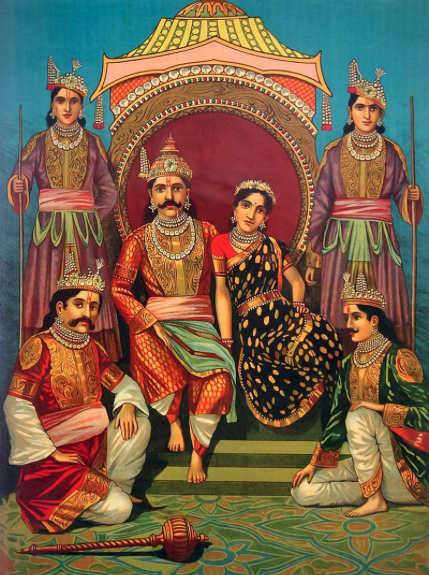
The Five Pandava brothers and their wife, Draupadi
So the five Pandavas and Draupadi leave Hastinapur to follow the path of liberation. They renounce the world and their possessions and set off to climb Mount Kailash, which leads to Swarga Loka, one of the eight higher spiritual planes in Hindu cosmology.
One particularly memorable section of the song-story describes the poignant farewells of the brothers’ with friends and neighbours.
Along on their way, all except Yudhisthira die. Yudhisthira is the only one to reach the door of Swarga Loka. He is accompanied by a dog, who is none other than Lord Yama, the lord of death and spirit himself. The story ends with the message that though the Pandavas may have departed this world, the tales of their good deeds remain and so, they are never truly gone nor forgotten.
All too soon, the story was ended, and for a while we sat and discussed the many similarities in stories across the world, and the wisdom teachings and truths held within the tales we tell. There was something sacred about his telling and I could have listened to Bhaga Khan all night long, but the women of the village had been cooking and it was time for us to receive their hospitality. I walked with Bhaga Khan into the darkness beyond the ‘village hall’, thanking him for the stories, giving him a kilo of hand made confectionary – which seemed a poor exchange for the riches of his telling – and sharing hopes that we would meet again to share stories next year.
I carried the stories and songs with me, as Gwilym and I were led to the open central courtyard of a family dwelling, flanked by four squat, single story mud built houses (our equivalent of cob built dwellings) with thatched roofs. A rug was laid out on the hardened earth floor of the yard for us to sit. Govind and Sharon our wonderful guides and translators joined us and we were served with small dishes of home-grown, home cooked spiced vegetable delights and millet roti straight from the clay oven. It was delicious. Rice is a scarce and expensive grain for these desert communities, but with visitors coming, they’d invested in a bag to make us a special desert, traditionally made for festivals and special occasions, which I’ve come to love, chawal ki kheer. It’s like a rice pudding but infused with cardamom, saffron, sugar, sometimes rosewater and other spices too. At the time of Sharad Purnima (the October full moon in India, which is the brightest and which had just passed), the rice is often left out beneath the light of the moon for up to three days to absorb its energy before the pudding is made.
The men of the family joined us, while the women prepared and served the food. Every so often, a half-clad toddler would make a dash for his father’s lap before being shooed away by one of the men, and we’d all laugh.
At the end of the meal, through Sharon, I asked to meet the women of the family who had prepared our food. This being ‘women’s business’ we were ushered into one of the dwellings where our host’s wife, her mother in law and sister in law greeted us, and where through Sharon, we were able to thank them for the meal and talk a little.
They were as curious about me as I was about them, but their questions overwhelmed mine. They asked if I was married and whether I had children. I expected my answer to raise eyebrows in this very traditional village. I told them I had one daughter of fourteen. This only served to raise more questions. “Only one child?”
How does one give adequate reasons for the breakdown of a marriage to women for whom marriage for life is an unquestioned fact of being as much as is breathing. I explained that my daughter’s father and I had ended our marriage when she was young. Which only provoked another question – “Why?”
Across a dinner party table back home in Wales, this question might have seemed rudely intrusive, but there was such guileless honesty and concern in the young woman’s question that I found myself struggling to form an answer. In that moment, western sensibilities seemed somewhat feeble, but I explained as succinctly as I could some of the reasons why the marriage ended.
She took my hand and spoke softly. “Aren’t you lonely?” translated Sharon.
“No, not really. I have a partner.” I explained. The word ‘partner’ seemed to require quite a bit of explanation from Sharon. The young woman looked back directly at me with a slightly quizzical look in her eye, and responded.
Sharon translated.“She’s asking if this is usual where you come from.”
How to answer that one? “No” I said. “It’s not usual, but it’s not unusual either.”
Sharon related my answer and the young woman’s gaze returned to mine. She shrugged her shoulders, a gesture that is universal it seems. She spoke again and Sharon translated. “She says it’s not usual here. Women marry at about sixteen and that’s it for life, but she understands that not all places are like this, that other places have different traditions, and that if this is usual in your country and you’re happy, that’s good.”
The young woman before me was in her very early twenties. She had a small son and an eight-month old daughter. She would have met her husband on her wedding day and had likely never travelled beyond 50 Km of the village. Yet, she was wise beyond her years, open hearted, generous, curious and accommodating of the fact that there were cultural differences across the world, and content for it to be so.
We steered our conversation to matters we had in common, first children and then to clothes. She disappeared, leaving me with her chubby eight month old in my arms. Sharon sidled up and reminded me that babies don’t wear nappies here. I didn’t mind, she was a bonny child, and I was missing my own daughter. Our hostess returned with her mother in law, carrying two lovely sari headscarves, hand embellished by the women of the family, and generously presented one each to myself and Sharon. She and her mother in law had great fun dressing us and we delighted and giggled at the results before the men were called and obligatory photos were taken.
It was a wondrous night. I had met Saraswati in the desert – twice! First I had encountered the artistic, creative aspect of the goddess in Bhaga Khan’s devotion to his art and audience. Then, I had found the goddess’ wisdom in in my young hostess, an understanding and acceptance far beyond her years and life experience.
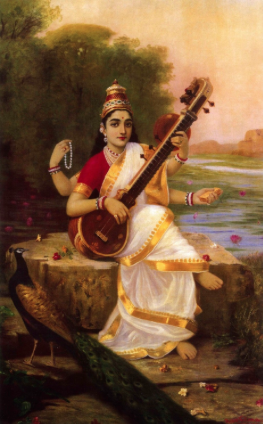
Saraswati
Saraswati is a part of the trinity of Goddesses: Saraswati, Lakshmi and Parvati, who help the trinity of Brahma, Vishnu and Shiva to create, maintain and regenerate-recycle the Universe respectively. If we are in the Kali Yurga epoch of mankind as Hindus suggest, then it is this kind of open heartedness: sharing of knowledge and creativity, quiet wisdom and acceptance of ‘other,’ and a willingness to reach beyond and to find common ground so that we may celebrate that which makes us human, that might yet be the saving grace of our time.
